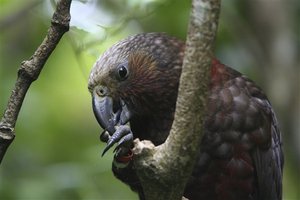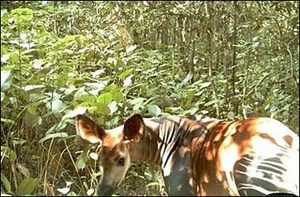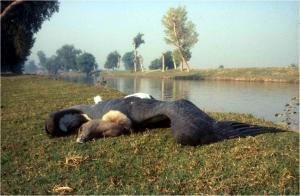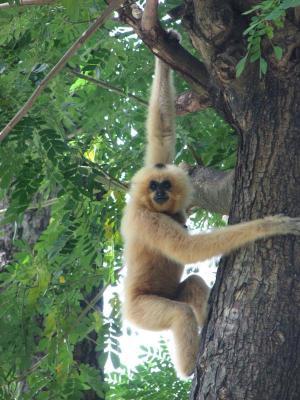Wellington, New Zealand -- A gang of unruly teenage bush parrots have wrought havoc at a bird sanctuary in New Zealand by using their powerful beaks to destroy nesting boxes.

|
| ©AP/Kakori Sanctuary
|
| Teenage native Kaka parrot
|
The native Kaka parrots - juvenile birds that haven't reached sexual maturity - have torn off nesting box doors and vandalized the bird homes, sanctuary conservation officer Matt Robertson said Friday.
Twenty-four of 44 new Kaka nest boxes built over the winter have been ripped apart, he said, adding that the birds then gouged out chunks of wood with their strong beaks.
"It may be that the challenge of taking doors off nest boxes is the Kaka equivalent to the Rubik's Cube," said Robertson. "As far as I'm aware, this extent of destruction has never been observed."
Kaka are acutely threatened by loss of habitat, competition from introduced species, and predators like stoats, ferrets and wild cats. They disappeared from the capital Wellington in the late 19th century when forests were cleared for settlement.
After an absence of more than a century, Kaka parrots were reintroduced to the Karori Sanctuary in Wellington in 2002 with six captive-raised birds. Since then, sanctuary staff have counted more than 100 juvenile parrots.
The birds are highly intelligent and extremely resourceful, Robertson said.




